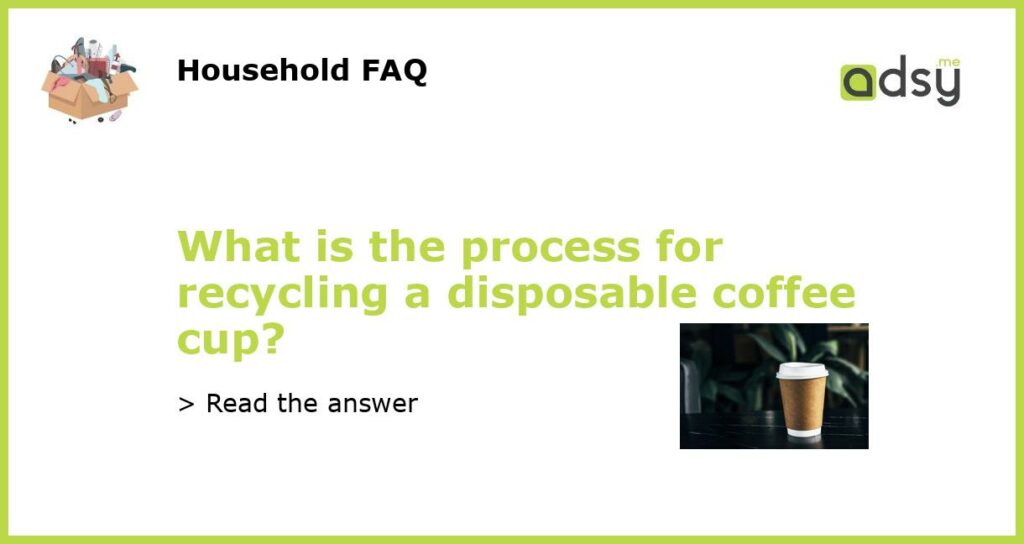Understanding the Importance of Recycling Disposable Coffee Cups
Disposable coffee cups, while convenient, have a significant impact on the environment. In the US alone, over 50 billion disposable cups are used and disposed of each year, with the majority ending up in landfills or polluting our oceans. Recycling these cups is essential if we want to reduce our carbon footprint and make our planet more sustainable.
The Process for Recycling a Disposable Coffee Cup
The process of recycling a disposable coffee cup starts with separating the cup itself from the lid, which is usually made of plastic. Then the cup and the lid are processed separately.
Cup Recycling Process
The paper portion of the disposable cup is made from a blend of paper fibers and a plastic liner, which must be separated. First, the cups are chopped up into small pieces, and the plastic liner is melted away. This process produces two materials- paper pulp and plastic pellets. The plastic pellets can be used to make items like park benches, while the paper pulp is used to create new paper products.
Lid Recycling Process
The lids of disposable cups are usually made from hard-to-recycle plastics, like polystyrene. These lids must be sorted and sent to specialized facilities that can process them. The lids are melted down and made into new plastic products like coat hangers, playground equipment, and even car bumpers.
The Benefits of Recycling Disposable Coffee Cups
Recycling disposable coffee cups can help reduce the number of cups that end up in landfills, reduce the amount of energy used in producing new cups, and reduce the amount of greenhouse gases released during the production process. Additionally, recycling coffee cups can help reduce the demand for new virgin materials and promote a circular economy.






